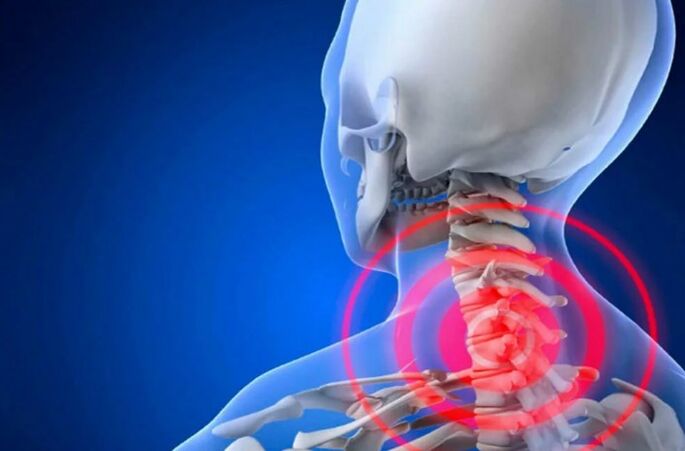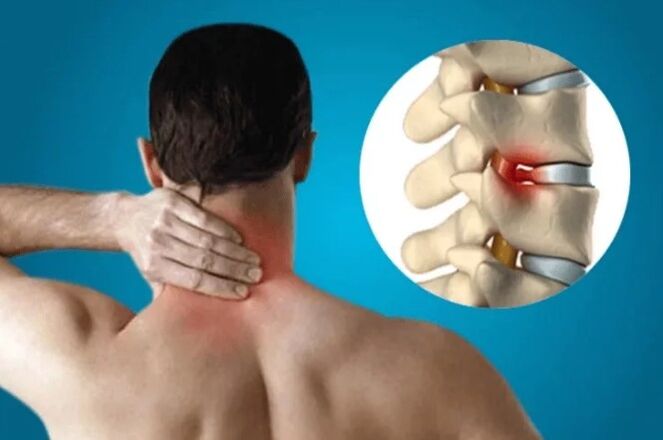Osteochondrosis of the cervical spine occurs due to pathological changes in the intervertebral discs. They weaken, become thinner, lose elasticity, put the vertebrae with damage and lose the ability to supply them with sufficient mobility. The main danger of the neck osteochondrosis is that the disease affects the nerve endings of the spine region because the brain's blood supply is violated.

Types and classification
A distinction is made between several stages of osteochondose of the cervical spine:
- First: First changes in the cartilage tissue of the intervertebral disc;
- Second: the beginning of the thinning of the disc, a decrease in the distance between the vertebrae;
- Third: destruction of the hard drive, the beginning of the deformation of the spine;
- Fourth: strong deformation of the spine.
Causes
The main cause of cervical osteochondrosis is the structure of the spine in this area. All vertebrae here fit themselves with minor loads and simple.
In view of the mobile cervix region, it is not surprising that the disease is so widespread.
Provision of the onset of the disease:
- Congenital anatomical characteristics (in people with a long neck, osteochondrosis occurs more often);
- Violation of the digestibility of minerals;
- hormonal deviations;
- Lack of sufficient muscle corset in the neck and shoulders;
- Hypodynamics;
- Cervical injuries;
- Settlement;
- High -up disorders;
- Obesity.

Symptoms
- Often the first symptom of a neck osteochondrosis is headache. It can be very strong, fluid like migraines, accompanied by dizziness and Madhouse.
- The appearance of "flying", dark spots, together the eyes and a decrease in eyesight are characteristic.
- The pain in the neck with this disease gives the back of the head, forehead and ears, it exacerbates when the position of the head changes.
- Handing is often referred to.
- There is noise in the ears, hearing loss.
- A violation of the coordination of the movement can pass out.
Diagnosis
To identify osteochondrosis of the cervical spine, they explain:
- Radiography that determines the condition of the vertebrae;
- calculated tomography to identify damage damage;
- Dopplerography that defines blood flow disorders;
- Duplex scan with the condition of the blood vessels.
Treatment
Pain relievers and anti -inflammatory medication are required as an ambalcan for cervical osteochondrosis. Depending on the strength of pain syndrome, local medication (ointments and gels), tablets or injections are used.

Also appointed:
- Vitamin therapy (group B vitamins);
- Medicines that relieve muscle cramp,
- Chondroprotector;
- Physiotherapeutic methods (electrophoresis, paraffin, magnetotherapy and others);
- Medical gymnastics;
- Massage and self -massage.
























